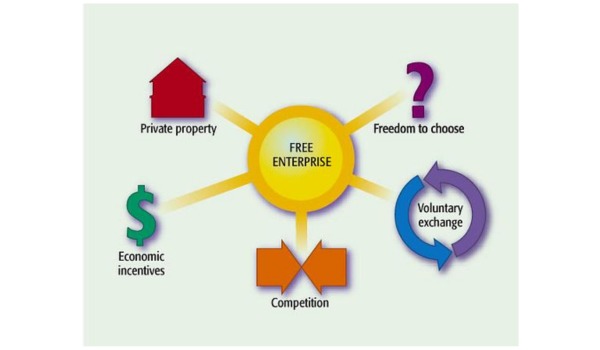How Does The Free Enterprise System Contribute To Technological Innovations
The free enterprise system, also known as the market economy or capitalism, with its emphasis on individual liberty, competition, and profit, is widely recognized as a powerful engine for driving technological innovation. Under this system, businesses, in pursuit of profit, constantly engage in technological advancements and product development, leading to overall societal progress. This article will explore how the free enterprise system contributes to technological innovation through the following mechanisms:

1. Competition as a Driver: Continuous Breakthroughs in Technological Advancement
The free enterprise system encourages competition among businesses, which in turn prompts companies to constantly seek differentiation to gain a larger market share. To win competition, businesses must continuously innovate technologically, introducing more advanced products and services.
Example: The mobile phone industry is highly competitive. From Nokia to Apple, to Huawei, Xiaomi, and others, each company strives to develop better phone features and user experiences, driving continuous progress in mobile phone technology.
2. Profit as an Incentive: Innovation Brings Rich Rewards
The free enterprise system grants businesses the right to pursue profit, using it as a primary driving force. Businesses invest capital in research and development, hoping to create products with market competitiveness, thereby generating substantial profits. This mechanism encourages businesses to constantly explore new technologies, pushing technological innovation.
Example: Tesla invested heavily in the electric vehicle field and, through its innovative technology, achieved significant market success and substantial profits, attracting more companies to enter the electric vehicle field, accelerating the progress of the electric vehicle industry.
3. Venture Capital as a Catalyst: Providing Funding for Innovative Projects
The free enterprise system creates a favorable environment for venture capital. Venture capital firms are willing to invest in promising innovative projects, even those with significant risks. This investment mechanism provides start-up capital for innovative companies, helping them translate ideas into reality.
Example: Silicon Valley venture capital firms have provided funding to numerous technology start-ups, propelling the rapid development of the internet and mobile internet.
4. Intellectual Property Protection: Encouraging Companies to Invest in R&D
The free enterprise system emphasizes the protection of intellectual property, encouraging businesses to invest in research and development and convert their innovative achievements into patents and copyrights. This protection mechanism provides companies with revenue security, encouraging them to continuously innovate technologically.
Example: Apple holds numerous patents related to technology, which ensures its products' competitive advantage in the market, encouraging Apple to continuously research and develop new products and technologies.
5. Market Demand as a Guide: Technology Development Driven by Consumer Needs
The free enterprise system encourages companies to focus on consumer needs in product and service development. To meet consumer demands, businesses constantly innovate technologically, developing products and services that better align with consumer needs.
Example: Amazon constantly refines its recommendation algorithm based on user shopping habits and preferences, providing users with a more convenient shopping experience.
6. Government Support: Policy Formulation to Promote Technological Innovation
While the free enterprise system emphasizes the operation of market mechanisms, governments also play a role in formulating policies to promote technological innovation. Governments can provide support for technological innovation through the following measures:
Tax Incentives: Providing tax incentives for research and development investment, encouraging companies to increase their R&D spending.
Establishing Research Funds: Establishing research funds to support universities and research institutions in conducting basic research.
Developing Talent Training Mechanisms: Cultivating and attracting highly qualified personnel to provide talent support for technological innovation.
7. Spillover Effects of Technological Innovation: Driving Overall Societal Development
Technological innovation not only drives business competition and development but also generates spillover effects, propelling overall societal development.
Increased Production Efficiency: Technological innovation increases production efficiency, lowers production costs, and improves living standards.
Improved Quality of Life: Technological innovation brings new products and services, improving people's quality of life in areas such as healthcare, transportation, and communication.
Economic Growth: Technological innovation drives the development of new industries, creates new jobs, and stimulates economic growth.
Conclusion
The free enterprise system is a powerful engine for technological innovation. It promotes technological innovation through mechanisms such as competition as a driver, profit as an incentive, venture capital as a catalyst, intellectual property protection, market demand as a guide, government support, and the spillover effects of technological innovation, driving overall societal progress.




